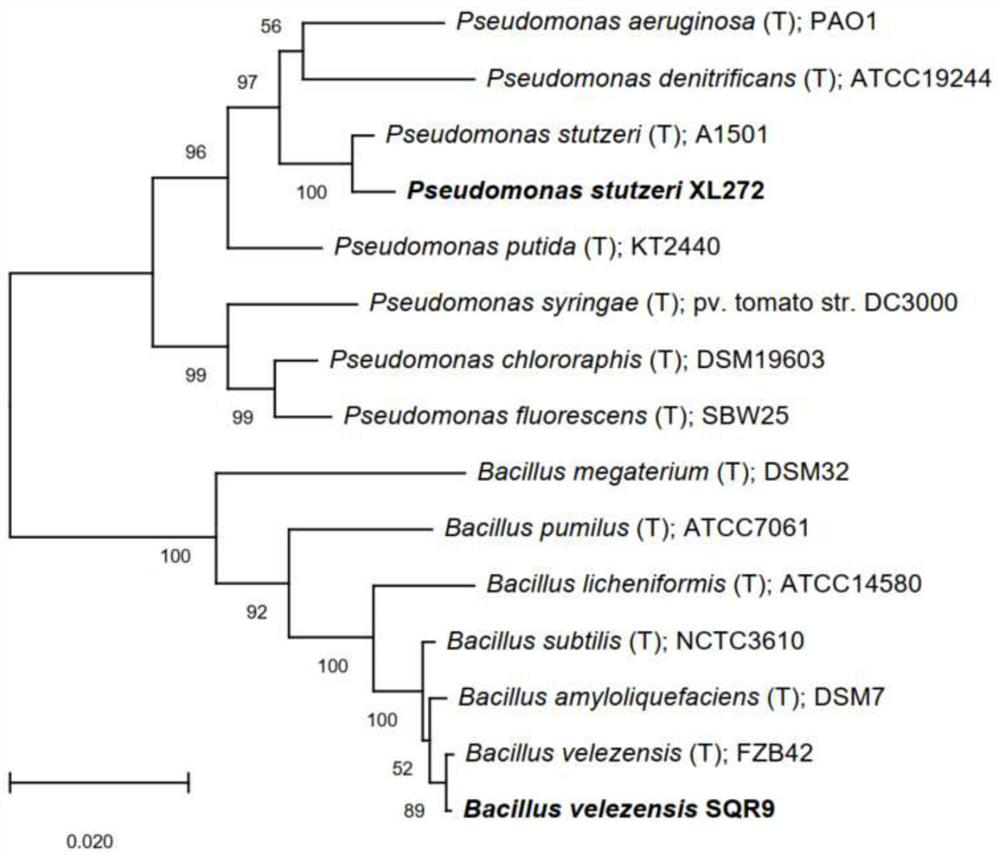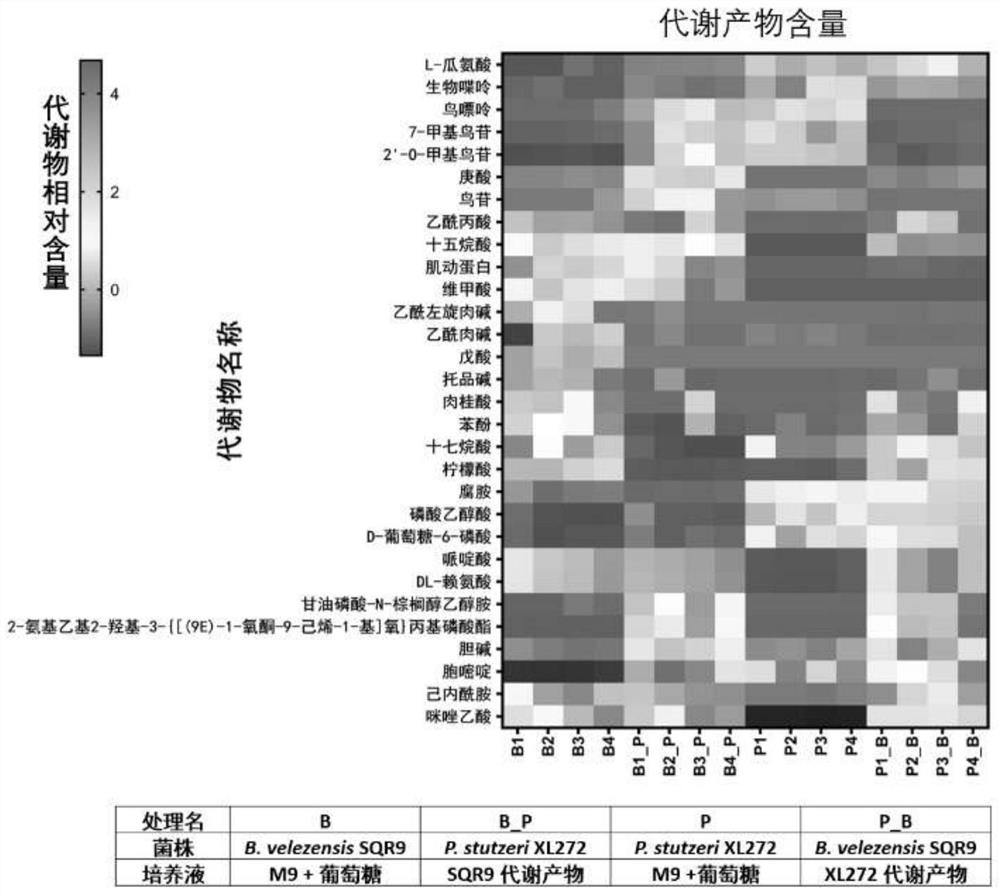Development and application of co-colonization type multifunctional complex microbial inoculant based on plant rhizosphere biofilm
A compound bacterial agent and biofilm technology, which is applied in the field of agricultural microorganisms, can solve the problems of restricting the colonization ability of growth-promoting bacteria, restricting the development of microbial fertilizers, and affecting the stability of the field effects of microbial fertilizers.
- Summary
- Abstract
- Description
- Claims
- Application Information
AI Technical Summary
Problems solved by technology
Method used
Image
Examples
Embodiment Construction
[0029] 1. Isolation and identification of strains
[0030] The cucumber rhizosphere growth-promoting Bacillus SQR9 has a strain preservation number of CGMCC No. 5808, which was isolated in a laboratory earlier. Pseudomonas stutzeri RFPse-2 was screened from the cucumber rhizosphere inoculated with the strain SQR9: the cucumber root system was removed from the soil, and the soil adhered to the root surface was collected. Take 0.1g of rhizosphere soil and add it to a 1.5mL centrifuge tube filled with 1mL 0.9% sodium chloride and glass beads, shake at the maximum speed for 20 minutes to form a soil suspension, and absorb 10 -6 ,10 -7 ,10 -8 0.1 mL of the soil suspension with a dilution factor of 0.1 mL was spread on the TSB plate, and each concentration was repeated three times. After culturing at 30°C for 2-7 days, the colonies with different shapes were selected and purified on the plate, and inoculated into the TSB liquid medium for 18- 24h, stored in a 15% glycerol tube at...
PUM
 Login to View More
Login to View More Abstract
Description
Claims
Application Information
 Login to View More
Login to View More - R&D
- Intellectual Property
- Life Sciences
- Materials
- Tech Scout
- Unparalleled Data Quality
- Higher Quality Content
- 60% Fewer Hallucinations
Browse by: Latest US Patents, China's latest patents, Technical Efficacy Thesaurus, Application Domain, Technology Topic, Popular Technical Reports.
© 2025 PatSnap. All rights reserved.Legal|Privacy policy|Modern Slavery Act Transparency Statement|Sitemap|About US| Contact US: help@patsnap.com



